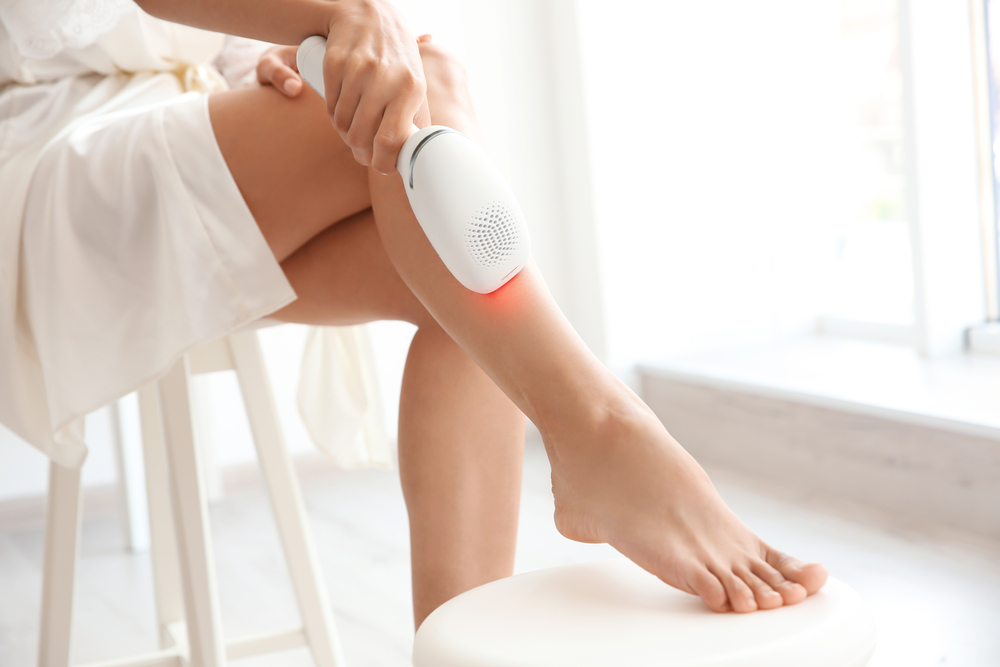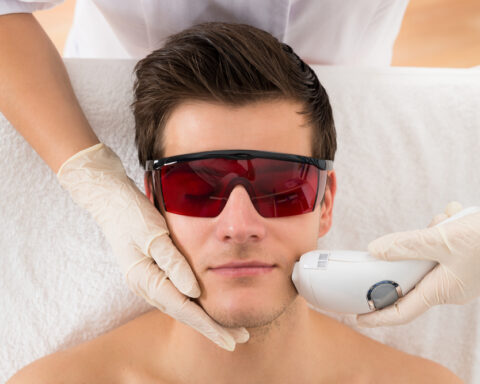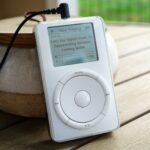Are at-home laser devices really zapping your problems away—or just your money? Laser technology has become the go-to tool for everything from hair removal to wrinkle smoothing to acne reduction. And now, thanks to sleek handheld gadgets that promise pro-level results at home, the DIY wave has officially hit the skincare scene.
But with hundreds of dollars on the line (and your face as the test subject), it’s worth asking: are these gadgets legit, or are you just playing aesthetic roulette?
What At-Home Laser Devices Claim to Do
Walk into any beauty retailer—or scroll TikTok for five seconds—and you’ll see at-home laser and light devices promising big things. Hair-free legs. Spotless skin. Tightened jaws. For a fraction of the cost of a medspa visit, these tools seem to offer freedom from endless appointments and awkward eye-protection goggles.
But, what are the popular at-home laser categories?
- Hair Removal Devices (like Tria, Ulike, and Braun): Use IPL (intense pulsed light) or diode laser to weaken hair follicles over time.
- Anti-Aging Lasers (like NIRA or Lyma): Use non-ablative lasers or light-emitting diodes (LEDs) to stimulate collagen and reduce fine lines.
- Acne-Fighting Light Tools (like Foreo Espada): Use blue light therapy to kill acne-causing bacteria.
Most devices work by emitting low levels of light or heat energy into the skin or hair follicles. The idea is to gradually damage the target (hair, pigment, or bacteria) without harming surrounding tissue.
What the In-Clinic Experience Delivers
Medical spas and dermatology clinics operate on a different level—literally and legally. They’re allowed to use Class IV medical-grade lasers, while most at-home devices cap out at Class I or II, which are considered “low risk” by regulatory bodies.
What are your in-clinic options?
- Professional Laser Hair Removal (with diode or Alexandrite lasers): More powerful than home devices, and better for larger areas or coarse hair.
- Fractional Resurfacing (Fraxel, Clear + Brilliant): Penetrates deeper skin layers for collagen remodeling and skin texture improvement.
- IPL and BBL (Broadband Light): Treat hyperpigmentation, redness, and broken capillaries more effectively than consumer versions.
In-clinic treatments usually involve cooling systems, trained technicians, and precise settings calibrated for your skin tone and concern. That’s hard to replicate from your bathroom mirror with a USB charger.
Where At-Home Lasers Hold Their Own
Not every beauty decision needs a dermatologist. In fact, for some goals, the DIY route works surprisingly well—if your expectations are realistic and your patience is intact.
Here’s where they shine.
- Hair Maintenance, Not Total Removal: DIY lasers won’t nuke your follicles overnight, but with consistent use (we’re talking 8–12 weeks minimum), they can reduce regrowth on smaller areas like underarms, bikini line, or face.
- Early Anti-Aging: Devices like the NIRA laser or Lyma system can mildly boost collagen over time. Think of it as a gentle nudge rather than a full facelift.
- Mild Acne Management: Blue light devices can help prevent breakouts, especially in combo with other skincare—just don’t expect them to replace your derm-prescribed routine.
Best-case scenario? You’ll see gradual, subtle results—less shaving, smoother texture, fewer flare-ups. But these results are rarely dramatic, and consistency is everything.
When Clinics Are Absolutely Worth It
If you’re targeting anything serious—like deep wrinkles, melasma, stubborn acne scars, or full-body hair removal—skip the gadget and book a consultation.
Here’s why clinic lasers are often the better investment.
- Precision and Power: A trained tech can customize your laser wavelength, intensity, and technique for your exact skin tone and concern.
- Faster Results: In-clinic lasers work deeper and more aggressively, so you’ll see changes in fewer sessions.
- Safety for All Skin Tones: Some at-home lasers aren’t safe for deeper skin tones. Clinics have machines that can adjust or use alternative methods like Nd:YAG lasers.
- Long-Term Value: While upfront costs are higher, you may need fewer treatments overall compared to the ongoing maintenance of at-home use.
Not to mention, you’re less likely to accidentally burn yourself because you sneezed mid-zap.
Cost Breakdown: What Are You Really Paying For?
Let’s talk numbers—because all the collagen talk in the world doesn’t matter if your wallet isn’t onboard.
- At-Home Devices: Range from $150 to $600+. No visit fees, but many require regular upkeep or replacement parts.
- In-Clinic Hair Removal: Around $100–$1,200 per session, depending on the area. Most people need 6–8 sessions.
- Laser Resurfacing: Can run from $400 to $2,500 per treatment, depending on depth and device type.
So yes, at-home devices look cheaper—but the payoff is usually smaller and slower. Consider your goals and whether you’re okay with “maintenance-level” results.
Common Misconceptions (and a Reality Check)
Let’s clear up a few myths before someone convinces you a pink plastic wand is the same thing your dermatologist uses.
- Myth: More use equals faster results
Overuse can irritate your skin and cause burns. Stick to the schedule in the manual—really. - Myth: At-home lasers work for everyone
Many devices don’t work well on light blonde, gray, or red hair—or very dark skin tones. Always check the manufacturer’s skin tone/hair color chart. - Myth: They’re totally risk-free
Even low-energy lasers can cause hyperpigmentation, especially if you skip sunscreen or use them on irritated skin. - Myth: One-time purchase = lifetime results
Most home devices require ongoing use to maintain effects. They’re not permanent solutions.
How to Choose: Ask Yourself These Questions
Not sure whether to DIY or go pro? Start here.
- Are you targeting a small concern, like peach fuzz or mild wrinkles?
- Can you commit to a consistent schedule (and not toss it after two weeks)?
- Are you okay with slow, modest results?
If yes, a reputable at-home device could work—just don’t expect miracles. If you’re chasing bigger results or have more complex skin needs, clinics still rule the game.
Laser-Focused Decisions: Spend Smart, Not Blindly
Laser treatments aren’t just another item on your beauty checklist—they’re an investment in time, money, and skin health. Whether you opt for the DIY path or the precision of a clinic, the smartest move is knowing what you’re actually buying into.
The sleek packaging may scream “miracle,” but real results come from matching the right tool to the right task—and knowing when to call in the professionals.






